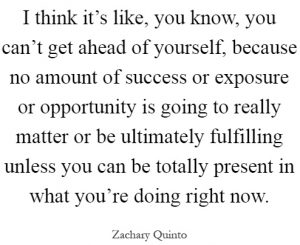 There is a Landmark Education distinction that no one gets…
There is a Landmark Education distinction that no one gets…
It has a huge overlap with the distinction “you live in a world of your own design”.
This, the “you live in a world of your own design” is somewhat like the Law of Attraction: you attract what you are… but much deeper. It is BEING that, not feeling, or thinking only, though you may feel and think it as well.
But thinking and feeling don’t create being… the reverse, the opposite is true. The thinking and the feeling come from the being.
The overlapping distinction, “you are a clearing for” is almost the same, but has a funnel like feeling to it.
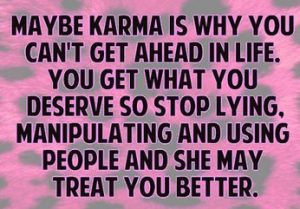 Here you are, thinking like you are like everybody else, living in the same world as everybody else, but all you get it crap, while people around get the gold.
Here you are, thinking like you are like everybody else, living in the same world as everybody else, but all you get it crap, while people around get the gold.
Don’t you sometimes feel that way? There doesn’t seem to be anything that you do different, and you are singled out to get the crap. The cheating bastard, the angry clerk, the car not starting, the rain on your parade.
You hope that bad things come in threes, but to you, they come in 30s.
It seems to me, that you needed some practice in justified unhappiness… You’ve been a clearing for bad stuff to happen.
The question is this: how do you become a clearing for bad stuff?
A person wrote to me. She said that I never told her how to raise her vibration. And I should.
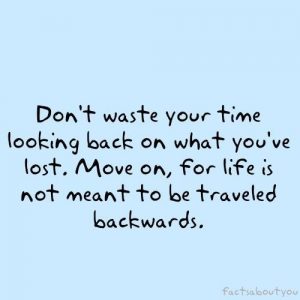 I looked at our correspondence from before. She paid for her Starting Point Measurements. In the document where I explain what all those numbers mean, I say: if your hydration is low: get the Water Energizer. If your health number is low, ask if I will take you as a Health Consultation client.
I looked at our correspondence from before. She paid for her Starting Point Measurements. In the document where I explain what all those numbers mean, I say: if your hydration is low: get the Water Energizer. If your health number is low, ask if I will take you as a Health Consultation client.
But she is a clearing for being neglected.
I am a clearing for being continually challenged to grow.
I am a clearing for being continually challenged to grow. Many times each day. I am challenged to see where I am not serving you as well as I could. Where I am not clear. How I can get better.
I am also challenged to brush up my Hungarian, and re-learn to type Hungarian on an English keyboard.
What is “special about me” is that I joyfully pick up the glove… and answer the challenge. I am tickled pink that I am asked by Life to grow. I am honored.
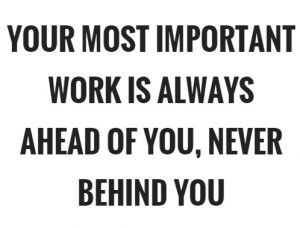 I remember when I was begging Source to trust me. That I was going to do its bidding.
I remember when I was begging Source to trust me. That I was going to do its bidding.
It took me decades to earn that trust. And I only dropped the ball a few brief periods… and caught myself doing that. I picked up the ball and ran with it, again.
You are a clearing for something is a version of “you live in a world of your own design”.
In being a clearing you are really dealing with your future self. ((
It’s Time to Get Acquainted With Your Future Self
By Melissa Dahl
There is one person whose wants and needs you routinely ignore, opting instead to tend to your own immediate desires, and that person is future you. When it comes to making decisions that will have some effect on your long-term health or happiness — for example, whether or not to go to the gym today, in keeping with your New Year’s resolution — current you is always finding a new way to steal from future you. It’s time the two yous got better acquainted.
This concept in itself may not come as a great surprise, but the reason why this happens is the subject of some new and pretty fascinating research in social psychology, which suggests that most people think of their future selves as an entirely separate person from their present selves. We perceive our future selves — and “future” here can mean decades or weeks from now — to essentially be strangers, and, as the recently published book The Marshmallow Test: Mastering Self-Control notes, this affects our behavior and decision-making. It’s one of the reasons some of us struggle to save money or eat healthily or do anything else that is kind of a pain in the here and now, says Hal Hershfield, a psychologist at UCLA who has done a number of studies in this area. (Hershfield likes to point out that The Simpsons neatly illustrates his work, in a scene that has Homer saying, “That’s a problem for future Homer. Man, I don’t envy that guy,” and proceeding to pour vodka into a jar of mayonnaise and knock it back like a shot.)
Hershfield and a team at Stanford University published a neuroimaging study that helps illustrate the way the brain makes this distinction between current and future you. While the study volunteers were inside an fMRI machine, the researchers asked them to first think about themselves, then to think about another person — either Matt Damon or Natalie Portman (who, presumably, the subjects had never met). Finally, they were asked, “Please think about yourself ten years from now.” In most of the participants, the brain activity that was measured when they were imagining their future selves resulted in a similar pattern to the activity measured when they were thinking of the celebrities.
In a way, this makes intuitive sense, notes Emily Pronin, a Princeton University psychologist who has also published work in this area. One of the defining differences between you and someone else is the way you experience your own thoughts and emotions versus someone else’s. “We experience our own [thoughts and emotions] internally. We can look inward,” Pronin said. “Whereas, for other people, we only know what their thoughts or emotions might be through their actions. So the future self — and in that same way, the past self — are more like another person than they are like the self, because we can’t experience the feelings of a past and future self like we can with the present self.”
And this has long-term implications for the choices that we make, Pronin said, because the decisions we make for our future selves end up looking a lot like the ones we would make for another person. And that’s not always a good thing. She tells me about an experiment she led, in which she told the participants that she was studying people’s reactions to a disgusting drink. “It was something like soy sauce and ketchup mixed up together,” she said. “And we told them, the more disgust you experience, the better we can judge your reactions.” She and her research team let their subjects decide how much of the gross concoction would be consumed; some people were told to choose for themselves, while others were told they were choosing for another person. And a third group was told they were choosing for themselves — but in two weeks, when they’d return to the lab and would then have to stomach the soy sauce–ketchup combo. The people who were made to decide how much of the gross drink they’d have to consume in that very moment tended to choose the smallest amount, which was about a teaspoon, Pronin said. “But what we found was that people chose a larger amount — a quarter cup — for their future self or for another person,” she said. “So they chose the same amount for a future self or another person. And the idea is that in the present, you’re very aware of your feelings, but in the future, it’s more abstract.” (Economists and behavioral economists call this effect future or temporal discounting — basically, the tendency to place higher value on immediate rewards than future ones.)
If our lack of concern for our future selves is caused by a sense of disconnection from them, then it stands to reason that feeling closer to future you will lead you to treat him or her better. Hershfield tested this by asking a group of participants to choose which of a series of Venn diagrams most accurately represented the way they felt about these two versions of themselves. In some of the diagrams, the present and future selves overlapped a lot, while in others they were almost entirely separate.
Sure enough, the people who circled the diagrams with more overlap between their current and future selves tended to have saved more money than those who viewed these two selves more separately. “Basically, we found this relationship where the more similar people felt to their future selves, the more assets they had, even when you controlled for things like education, income and age,” said Hershfield.
His work has identified at least one way to help people better cozy up to their future selves. In a clever study, Hershfield showed some college students images of their own faces that been digitally altered to appear 50 years older, and showed others current, unaltered images. While looking at the image, the participants were asked to indicate how much of their salary they wanted to allocate to their 401(K), and those who’d seen a glimpse of their digitally aged selves said that they would save about 30 percent more, on average, than the students shown pictures of their current selves.
“So the lesson from that is, anything that we can do that will increase how concrete and salient our future self is – that’s the type of thing that can help us make better decisions,” Hershfield said. Anyone with a smart phone can try this for themselves; over the weekend, I terrified myself by playing around with an app called AgingBooth, which adds wrinkles and jowls and gray hair to the image of yourself you’ve uploaded, to supposedly give you a view of what you’ll look like in 2045.
But, perhaps surprisingly, Hershfield doesn’t necessarily recommend trying to force your brain into reckoning with the apparently jarring idea that current you and future you are, in fact, the same person, if that’s not your natural inclination. Instead, he suggests trying to work with your mind’s misconception. If your brain insists on believing your future self is a different person, well, then, go with that — just try to act as if this is another person you care about and want to treat well.
TAGS: SOCIAL, PSYCHOLOGYGOALS,THE FUTURE IS NOW, is this true or is this bs?))
For humans, with the introduction of the concept “time” there is a past self, a present self (if you are one of the one in 100 thousand you are conscious of it), and future self.
Your past self has set a track record. For doing, for attitude, for how, for beingness.
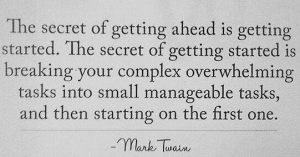 And unless something happens, that past self is also your future self.
And unless something happens, that past self is also your future self.
Everyone is trying to pretend that this is not so. But unless you have something dramatic in your present self, the future is going to be a repeat of the past.
I my programs, we work on gaining insights in the present moment, so you can have a different future self.
You cannot change the future, it is not in your power. But you can cause your future self to be different. Do different. Have a different attitude.
It’s not automatic, it is not easy, and anybody who says different has something to sell you.
Without changing what you can expect from your future self, you are condemned to a lot of mistakes. Broken promises, forgotten commitments, wasteful purchases, false starts.
 Your present self, the one that makes the promises, the one that dreams up a future, is unaware, or blissfully ignorant, or hopeful about your future self… and makes decisions from the delusional, ignorant data you fancy about your future self.
Your present self, the one that makes the promises, the one that dreams up a future, is unaware, or blissfully ignorant, or hopeful about your future self… and makes decisions from the delusional, ignorant data you fancy about your future self.
Until you become aware that dislodging that past self occupying your future self takes work, diligent, consistent, conscious work, who you will be, how you will be, what your life will be like is already written. In stone.
And that is what the distinction “you are a clearing for…” says.
I have changed my future self by building a track record of past selves.
No escape, the left brain will ALWAYS file your actions, your feelings, your attitude in the future.
Remember, that the left brain takes unjustifiable shortcuts. It ignores 99% of reality. It is machine-like. It is trying to be efficient, not effective. And it doesn’t care about what you want. Not even a little.
And it cannot process change. So expect this “building track record” to be a difficult task, a lot like Sysyphos and his rock… The mountain is steep, the rock is big, and you need to sleep sometimes.
So not surprisingly, while you sleep, all your efforts are erased. You start from zero.
You forget why you wanted to change. You forget even that you wanted to change. You settle back into your same old same old.
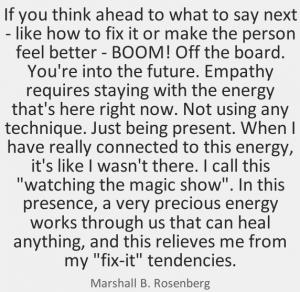 The reason people have “a transformational experience” when they do an on-site intense program is this: they wake up into a reality where people are reminded of what they wanted, for the duration of the program.
The reason people have “a transformational experience” when they do an on-site intense program is this: they wake up into a reality where people are reminded of what they wanted, for the duration of the program.
It was regaled that Werner Erhard had a big sign at the foot of his bed saying “You don’t have to”.
Why? Because that sign worked for him. It put him in the driver’s seat where he had a choice.
Of course it didn’t work 100%, Werner’s vibration never rose above 505, and most of his life was spent under 500…
But it sounded good… You don’t have to.
So what did I do, what do I do to stay on track? To have a future self who can, and will?
Remember my modus operandi? I say: There is no way I am going to….
I said it when I was 16.
I said it when I was 52.
and I say it today.
There is no way I am going to go back to misery… lol. There is no way I am going to be less than magnificent. There is no way I am going to dishonor the trust placed in me.
And it keeps me straight, with only minor slides back…
I have tested it and have found that the amount of passion people were able to put into that declaration varied person to person.
I had one for whom it worked and still works. Taking and keeping her on the level where she clawed up herself to. If she wanted to go higher, the declaration has to be bigger. So far she hasn’t been ready for that.
The rest: no. No passion, no courage, no energy.
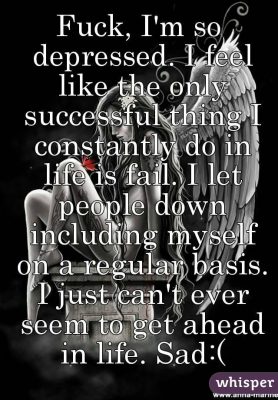 Desire is tricky. Desire could work, but I have never seen it work. Why? Because it fights with like forces.
Desire is tricky. Desire could work, but I have never seen it work. Why? Because it fights with like forces.
You see, you have a desire for pleasure. For comfort. For companionship. And you have a desire to be rich.
The first three desires offer you immediate gratification, the last waves a carrot, way out in the future.
You will, time and again, choose the immediate gratification. A bird in the hand is better than two birds in the bush, says the saying. And you always choose the bird in the hand.
 Mine, my driving force is not desire. It is more like “I’ll do anything to avoid that unpleasant feeling of being a disappointment.” To myself, to my parents, to Life, to Source.
Mine, my driving force is not desire. It is more like “I’ll do anything to avoid that unpleasant feeling of being a disappointment.” To myself, to my parents, to Life, to Source.
No, no way, not in my life, NEVER… angry tears spilling out.
If you are tepid, wishy washy, you will never be able to whip up that “no way” enough to drive you.
And that is the bad news.
I challenge you to prove me wrong.
PS: here is a link to an article about your future self… long, but worth reading.
Read the original article: How your past self is creating your future and what you can do about it
